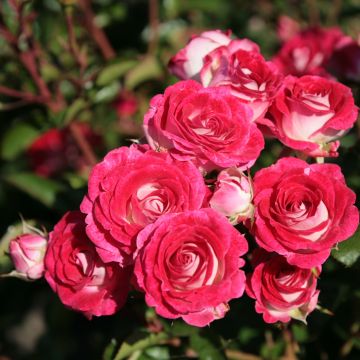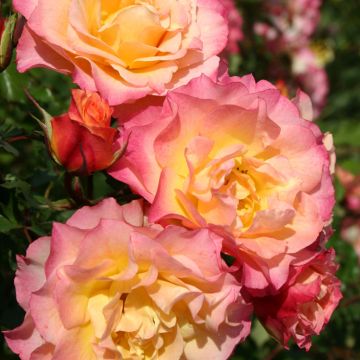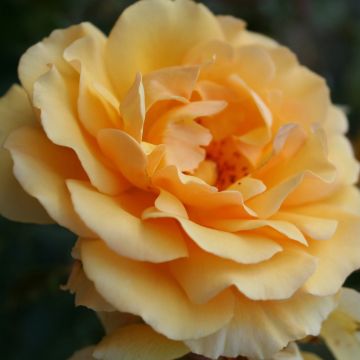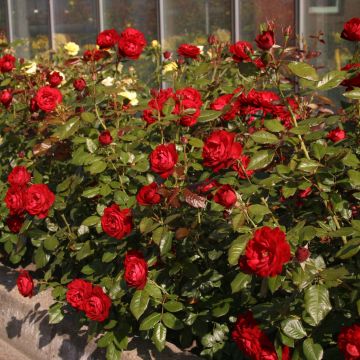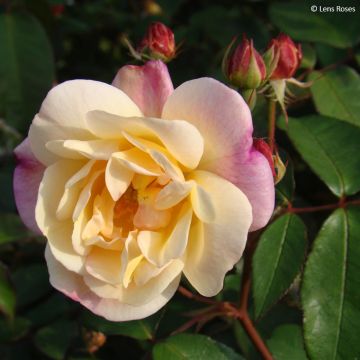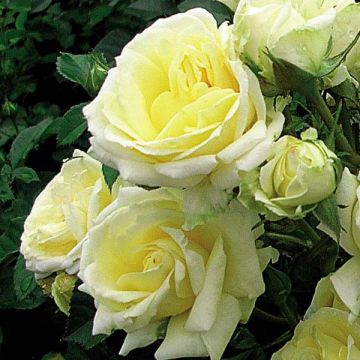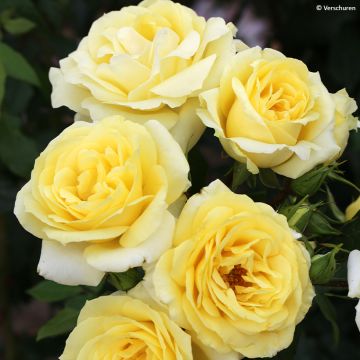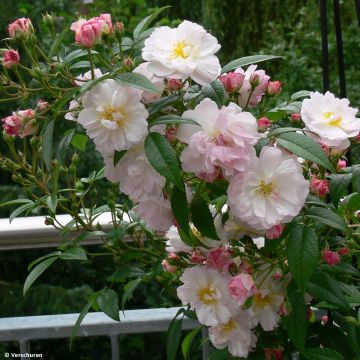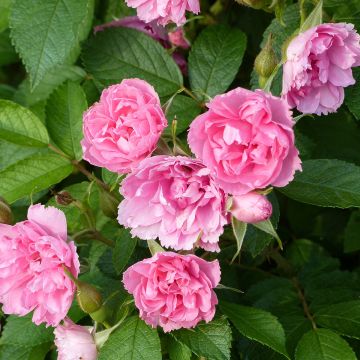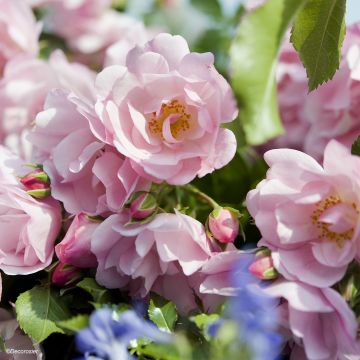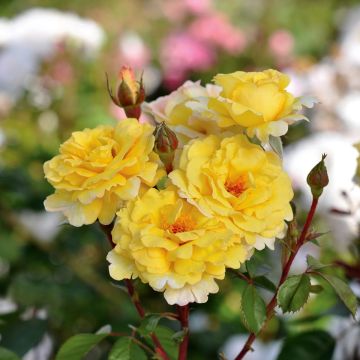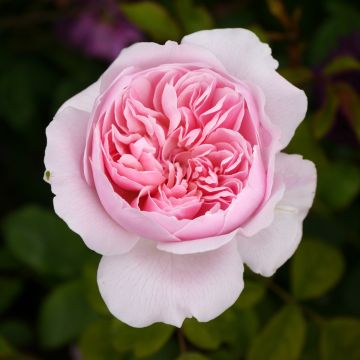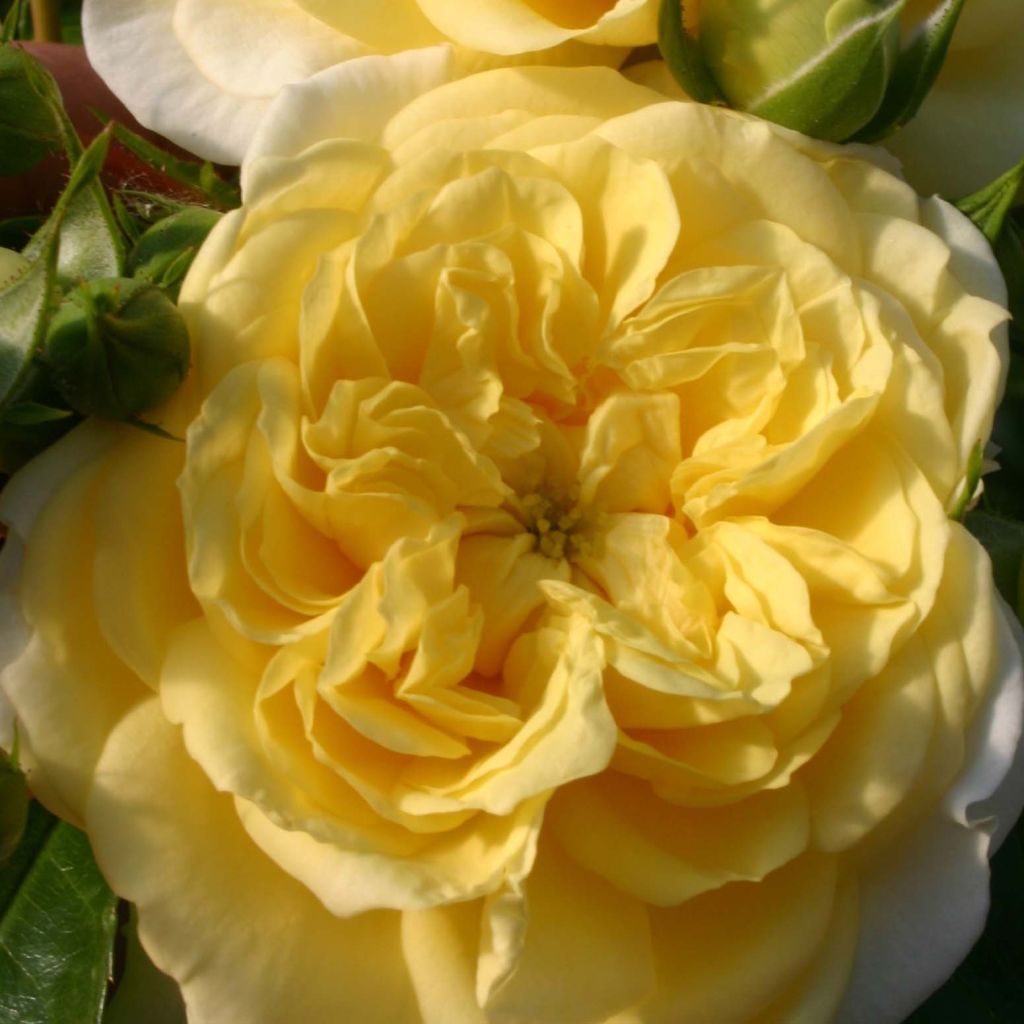

Rosa x floribunda Rigo Rosen - 'Solero' - Shrub Rose
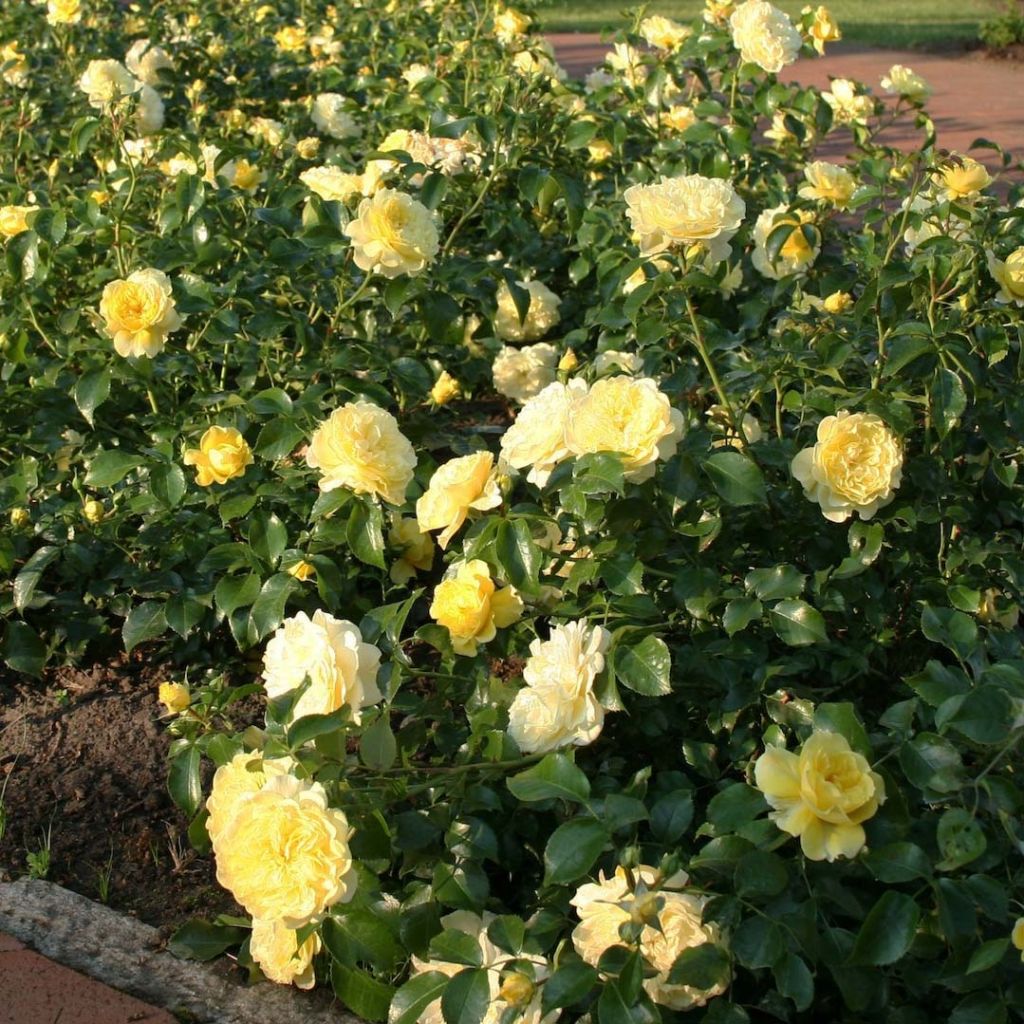

Rosa x floribunda Rigo Rosen - 'Solero' - Shrub Rose
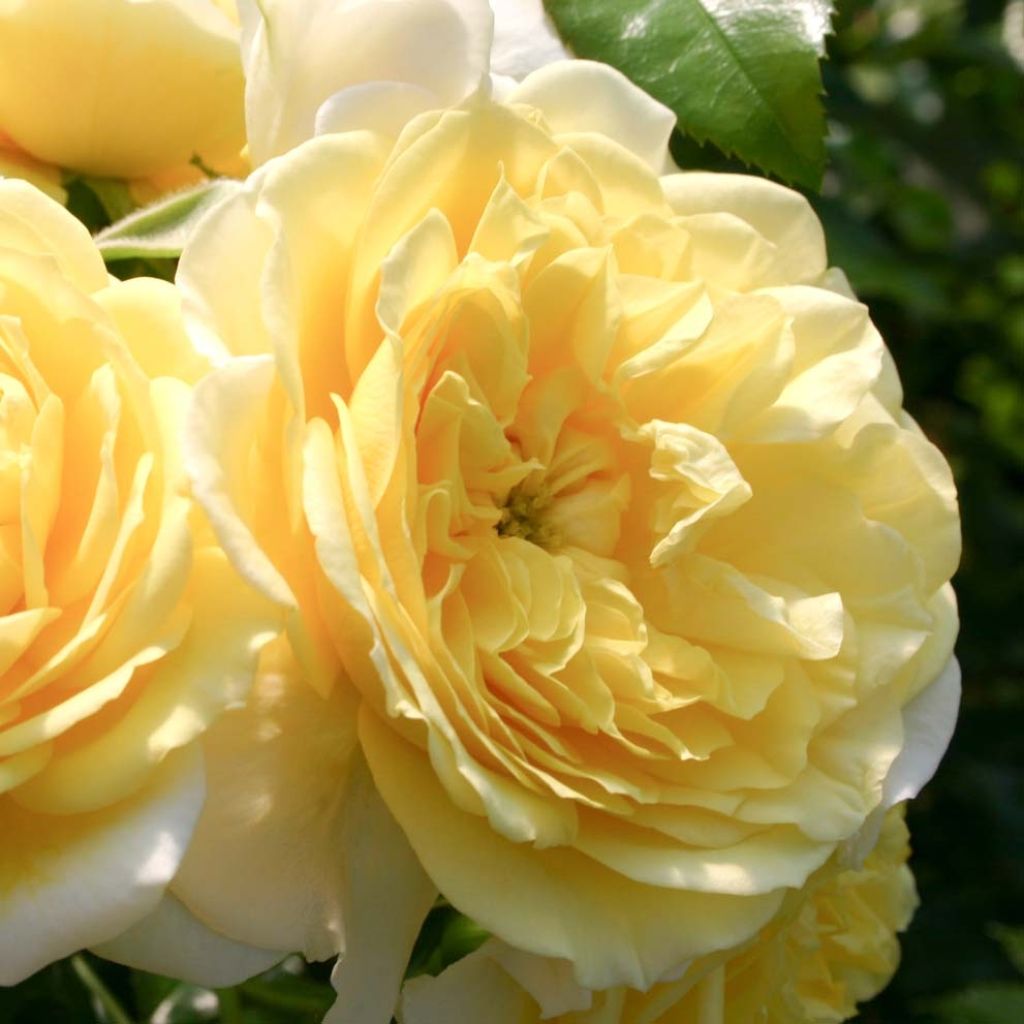

Rosa x floribunda Rigo Rosen - 'Solero' - Shrub Rose
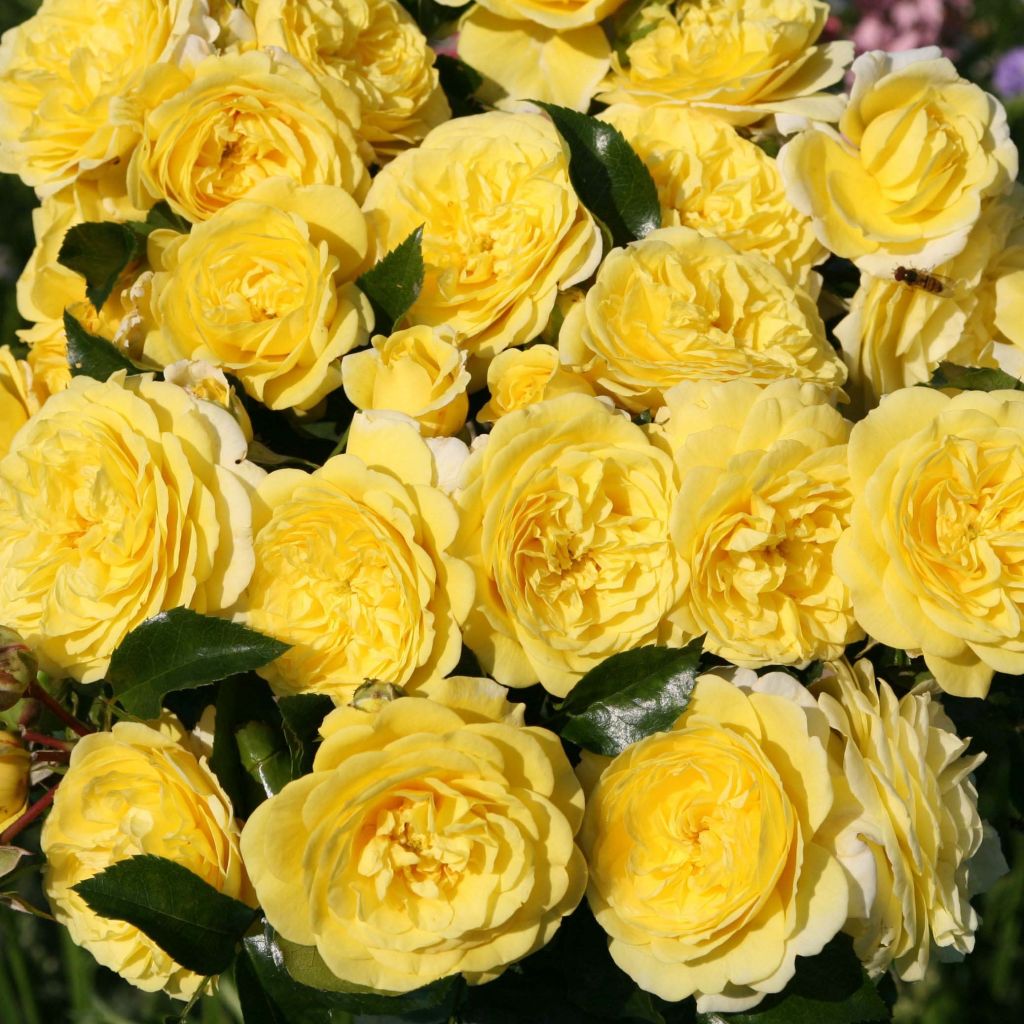

Rosa x floribunda Rigo Rosen - 'Solero' - Shrub Rose
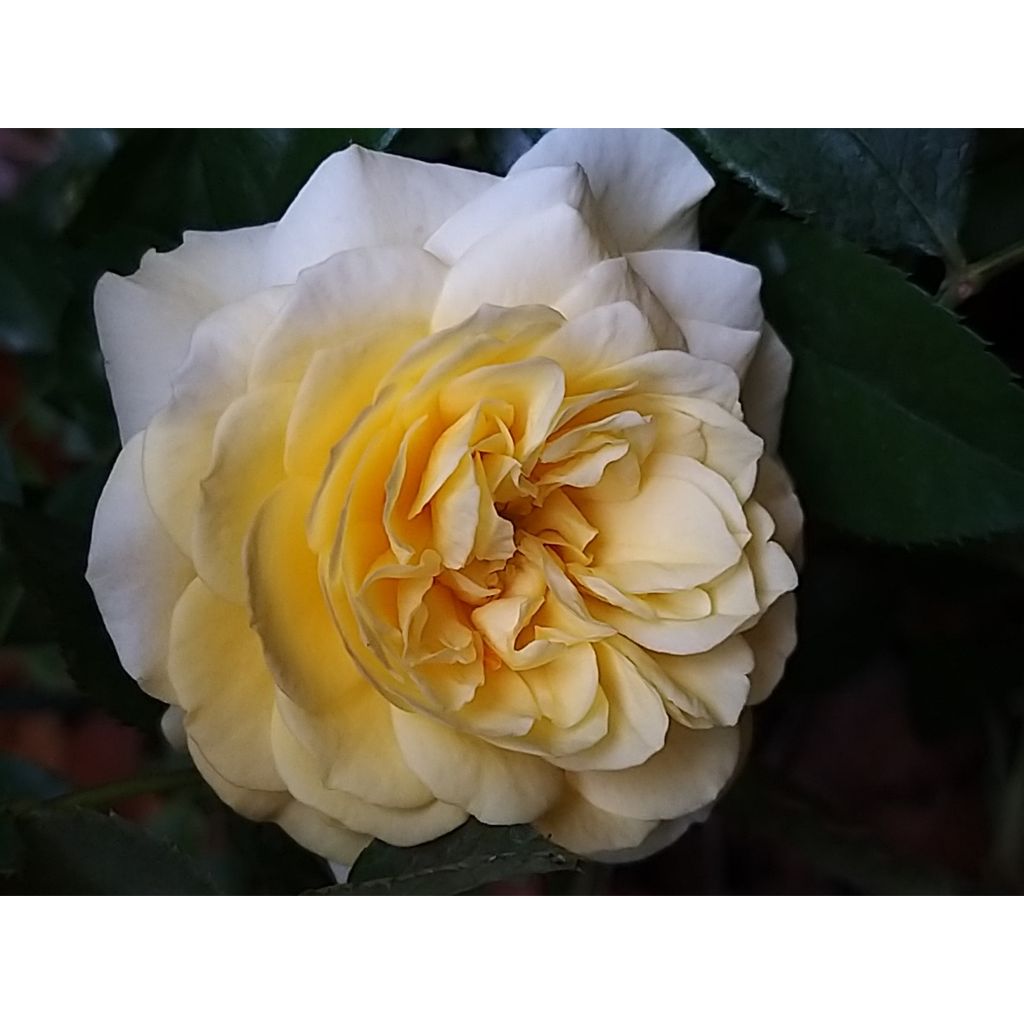

Rosa x floribunda Rigo Rosen - 'Solero' - Shrub Rose
Rosa x floribunda Rigo Rosen - 'Solero' - Shrub Rose
Rosa x floribunda Rigo Rosen® Solero® Korgeleflo
Korgeleflo
This plant carries a 24 months recovery warranty
More information
We guarantee the quality of our plants for a full growing cycle, and will replace at our expense any plant that fails to recover under normal climatic and planting conditions.
From €5.90 for pickup delivery and €6.90 for home delivery
Express home delivery from €8.90.
From €5.90 for pickup delivery and €6.90 for home delivery
Express home delivery from €8.90.
Delivery to Corse prohibited: UE law prohibits the import of this plant from mainland France to Corse as part of the fight against Xylella fastidiosa. Please accept our sincere apologies.
More information

Does this plant fit my garden?
Set up your Plantfit profile →
Description
The Rigo Rosen 'Solero' Rose Bush is a truly sunny small landscape bush that illuminates the space around it when in bloom, from late spring to the first frost. Its miniature, slightly fragrant double roses display a soft and bright lemon-yellow colour, perfectly highlighted by a glossy dark green foliage that remains decorative until late in the season. Very hardy, easy to grow, highly floriferous, and almost maintenance-free, this naturally shaped rose bush fits well in all flower gardens, whether in borders or beds. Its compact growth is perfect for container or planter cultivation to adorn the terrace or balcony.
The Solero 'Korgeleflo' Rose is a German creation by Kordes. It was obtained in 2009 and distinguished in the same year by the highly selective German A.D.R label for its excellent natural disease resistance, among other criteria. It is part of a series of roses called 'Sans Contraintes', requiring very little maintenance, and of the 'Rigo Rosen' collection developed in partnership with 'Globe Planter', bringing together varieties selected for their disease resistance, attractive habit and ability to flower enthusiastically in all regions. All Rigo-Roses® have obtained the ADR label.
This 'Solero' variety belongs to the floribunda rose family, with flowers grouped in bouquets. It quickly forms a small ramified bush with an upright and slightly spreading habit, reaching a height of about 70cm (28in) and a width of 60cm (24in). Its thorny stems bear a well-furnished, highly decorative foliage. Initially a beautiful light and vibrant green, the leaves darken in summer. They are divided into five glossy leaflets finely toothed at the edges. Its flowering continues from June to October if the soil remains somewhat moist in summer. Its corollas are double, resembling old-fashioned roses, forming wide 6cm (2in) pompom-like clusters, and are grouped in upright clusters of 4 to 8 flowers. The flower offers a beautiful gradient from lemon yellow to cream yellow from the centre to the periphery. The deciduous foliage turns yellow before falling in autumn.
The 'Solero' rose adapts to all soils that are not too dry and to all climates, allowing it to be welcomed without reservation in many regions. In the hotter climates, it is best placed in the morning sun, while it will flower better in full sun in the cooler regions. It is ideal as a border plant for pathways or flower beds, above a wall, or on a large slope where it will cover the ground. It can also be planted in groups of 3 plants, arranged in a triangle, or as a centrepiece in a small bed of blue, white, or orange flowers (perennial flax, lavender, snapdragons, and potentillas in moist soil). Plant it en masse or alongside ground-cover roses with white, yellow, red, or orange flowers to emphasise the path or the beds of lightweight or opulent shrubs and perennials. It pairs perfectly with perennial geraniums (Geranium Rozanne, Blue Cloud, Anne Folkard, Nimbus, Orion), bellflowers (lactiflora, rapunculoides), catmints, delphiniums, foxgloves, or other perennial salvias.
Report an error about the product description
Rosa x floribunda Rigo Rosen - 'Solero' - Shrub Rose in pictures
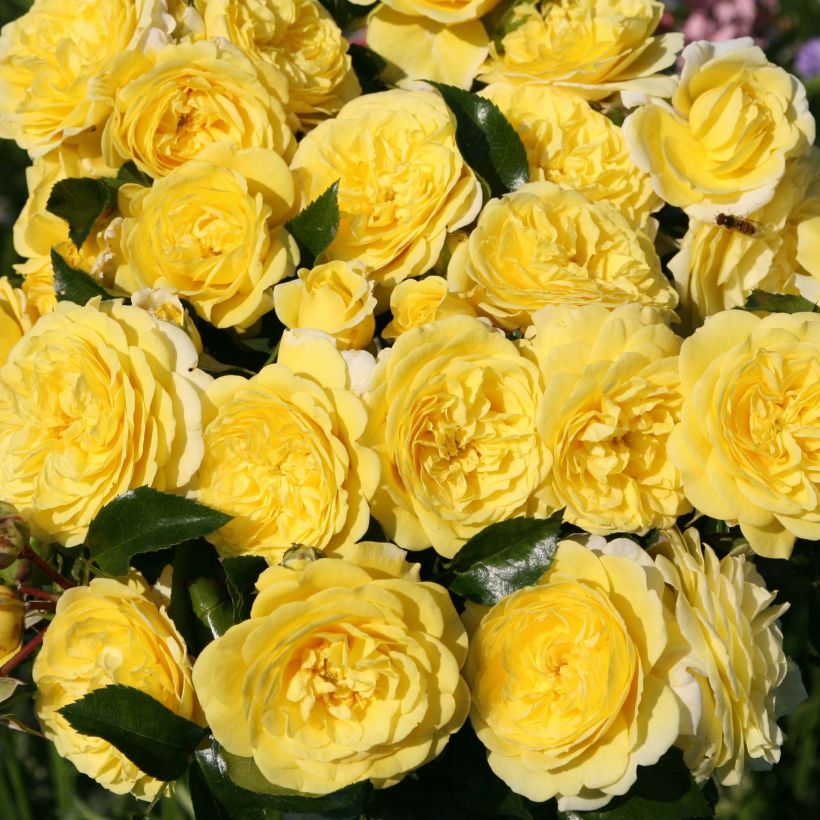

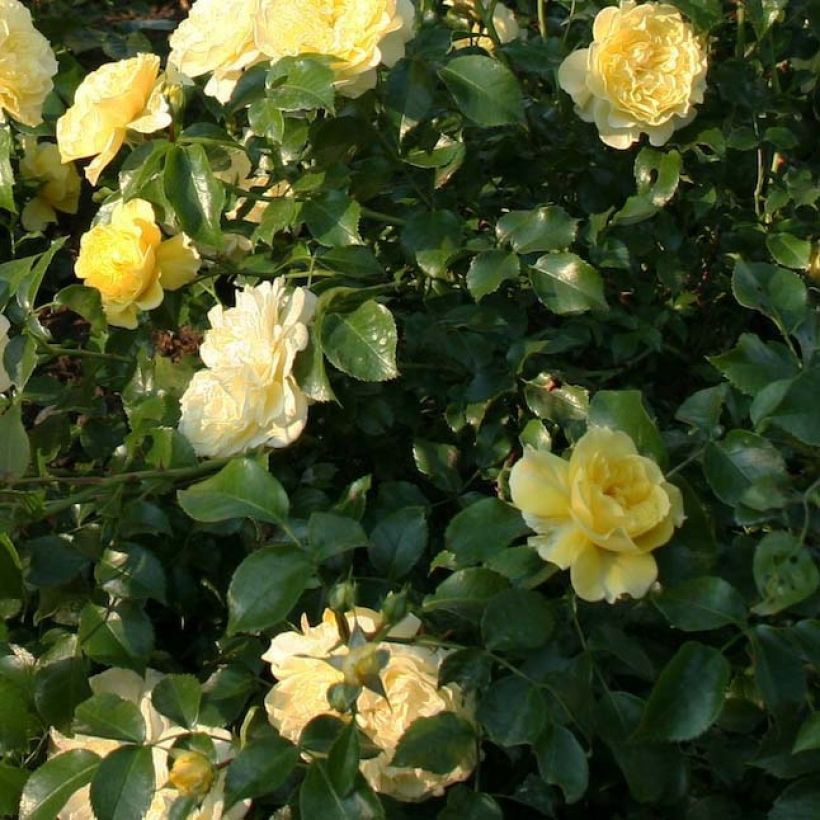

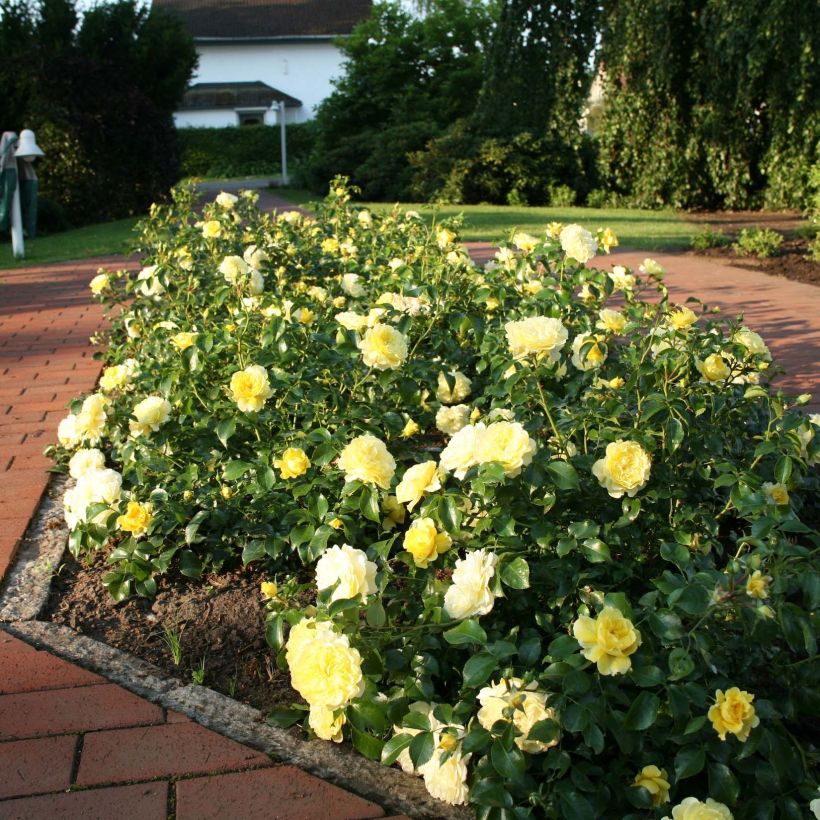

Plant habit
Flowering
Foliage
Botanical data
Rosa
x floribunda
Rigo Rosen® Solero® Korgeleflo
Rosaceae
Korgeleflo
Cultivar or hybrid
Other Polyantha clustered Roses
Planting and care
To plant a 'Solero' rose, it's best to do it between November and March in well-drained soil that's been prepared and is of average quality. Roses typically prefer heavier soils over lighter soils, but if the soil is too sandy, compact, or dry in summer, it's best to add compost or well-rotted manure to the planting hole. However, you should avoid planting in waterlogged soil during winter as it could harm the rose. Find a spot with some shade and plenty of sun for planting. Roses need a lot of nutrients, so use a specific fertiliser during the start of vegetation and throughout the flowering period. To promote reblooming, remove faded flowers often. Floribunda and polyantha rose varieties are more robust and have more flowers than large-flowered rose varieties. So, it's best to prune the stems by about a quarter of their length (from 4 to 6 buds from the base of the stem) at the end of winter. Always prune above an outward-facing bud to promote bushy growth and prevent the branches from becoming tangled in the centre of the canopy.
Roses may develop unsightly spots at the end of summer, but this is a natural occurrence and doesn't harm the rose's growth.
Planting period
Intended location
Care
-
, onOrder confirmed
Reply from on Promesse de fleurs
Roses by purpose
Haven't found what you were looking for?
Hardiness is the lowest winter temperature a plant can endure without suffering serious damage or even dying. However, hardiness is affected by location (a sheltered area, such as a patio), protection (winter cover) and soil type (hardiness is improved by well-drained soil).

Photo Sharing Terms & Conditions
In order to encourage gardeners to interact and share their experiences, Promesse de fleurs offers various media enabling content to be uploaded onto its Site - in particular via the ‘Photo sharing’ module.
The User agrees to refrain from:
- Posting any content that is illegal, prejudicial, insulting, racist, inciteful to hatred, revisionist, contrary to public decency, that infringes on privacy or on the privacy rights of third parties, in particular the publicity rights of persons and goods, intellectual property rights, or the right to privacy.
- Submitting content on behalf of a third party;
- Impersonate the identity of a third party and/or publish any personal information about a third party;
In general, the User undertakes to refrain from any unethical behaviour.
All Content (in particular text, comments, files, images, photos, videos, creative works, etc.), which may be subject to property or intellectual property rights, image or other private rights, shall remain the property of the User, subject to the limited rights granted by the terms of the licence granted by Promesse de fleurs as stated below. Users are at liberty to publish or not to publish such Content on the Site, notably via the ‘Photo Sharing’ facility, and accept that this Content shall be made public and freely accessible, notably on the Internet.
Users further acknowledge, undertake to have ,and guarantee that they hold all necessary rights and permissions to publish such material on the Site, in particular with regard to the legislation in force pertaining to any privacy, property, intellectual property, image, or contractual rights, or rights of any other nature. By publishing such Content on the Site, Users acknowledge accepting full liability as publishers of the Content within the meaning of the law, and grant Promesse de fleurs, free of charge, an inclusive, worldwide licence for the said Content for the entire duration of its publication, including all reproduction, representation, up/downloading, displaying, performing, transmission, and storage rights.
Users also grant permission for their name to be linked to the Content and accept that this link may not always be made available.
By engaging in posting material, Users consent to their Content becoming automatically accessible on the Internet, in particular on other sites and/or blogs and/or web pages of the Promesse de fleurs site, including in particular social pages and the Promesse de fleurs catalogue.
Users may secure the removal of entrusted content free of charge by issuing a simple request via our contact form.
The flowering period indicated on our website applies to countries and regions located in USDA zone 8 (France, the United Kingdom, Ireland, the Netherlands, etc.)
It will vary according to where you live:
- In zones 9 to 10 (Italy, Spain, Greece, etc.), flowering will occur about 2 to 4 weeks earlier.
- In zones 6 to 7 (Germany, Poland, Slovenia, and lower mountainous regions), flowering will be delayed by 2 to 3 weeks.
- In zone 5 (Central Europe, Scandinavia), blooming will be delayed by 3 to 5 weeks.
In temperate climates, pruning of spring-flowering shrubs (forsythia, spireas, etc.) should be done just after flowering.
Pruning of summer-flowering shrubs (Indian Lilac, Perovskia, etc.) can be done in winter or spring.
In cold regions as well as with frost-sensitive plants, avoid pruning too early when severe frosts may still occur.
The planting period indicated on our website applies to countries and regions located in USDA zone 8 (France, United Kingdom, Ireland, Netherlands).
It will vary according to where you live:
- In Mediterranean zones (Marseille, Madrid, Milan, etc.), autumn and winter are the best planting periods.
- In continental zones (Strasbourg, Munich, Vienna, etc.), delay planting by 2 to 3 weeks in spring and bring it forward by 2 to 4 weeks in autumn.
- In mountainous regions (the Alps, Pyrenees, Carpathians, etc.), it is best to plant in late spring (May-June) or late summer (August-September).
The harvesting period indicated on our website applies to countries and regions in USDA zone 8 (France, England, Ireland, the Netherlands).
In colder areas (Scandinavia, Poland, Austria...) fruit and vegetable harvests are likely to be delayed by 3-4 weeks.
In warmer areas (Italy, Spain, Greece, etc.), harvesting will probably take place earlier, depending on weather conditions.
The sowing periods indicated on our website apply to countries and regions within USDA Zone 8 (France, UK, Ireland, Netherlands).
In colder areas (Scandinavia, Poland, Austria...), delay any outdoor sowing by 3-4 weeks, or sow under glass.
In warmer climes (Italy, Spain, Greece, etc.), bring outdoor sowing forward by a few weeks.




































